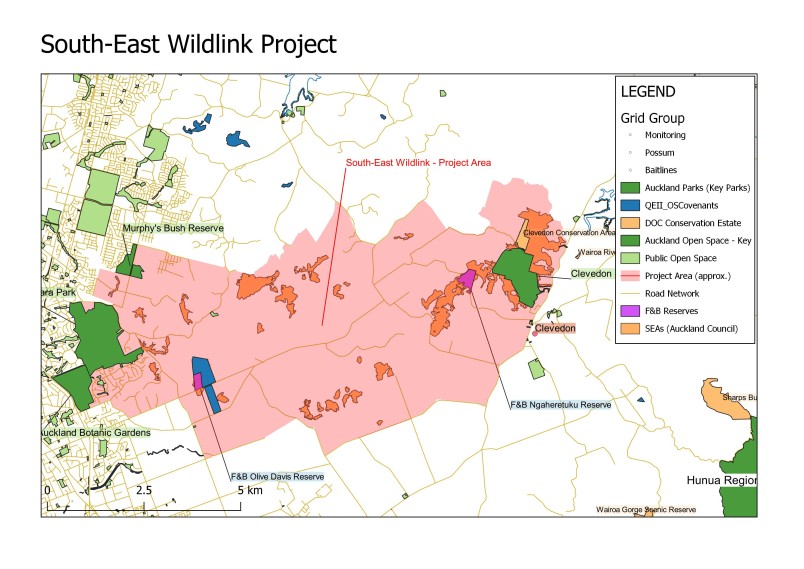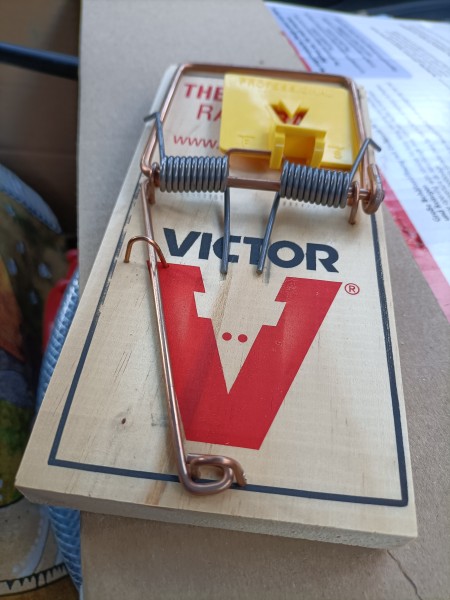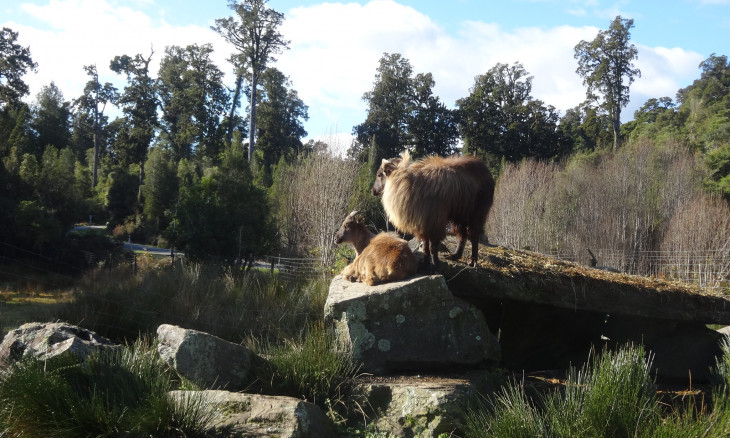
Forest & Bird is helping native wildlife flourish in the Auckland region through the South-East Wildlink.
The project covers 10188 ha in the South-Eastern semi-rural part of Auckland. The Wildlink creates a corridor of native bush between the two Forest & Bird reserves, Totara Park, Auckland Botanic Gardens, and Clevedon Scenic Reserve, providing a safe habitat for native animals and invertebrates to feed, roost and breed.

The stick insect is common in South-East Wildlink area, yet is often overlooked due to its cryptic twig-like appearance.
It aims to protect native birds, lizards, insects, and critically endangered long-tailed bats, which have been spotted in the Wildlink area, from introduced predators. Eventually, Forest & Bird hopes the South-East Wildlink will connect with Hunua and Waitakere regional parks and pest-free islands in the Hauraki Gulf.
Forest & Bird volunteers have been carrying out pest control for years in its two reserves: the 20-acre Olive Davis Reserve and the 37-acre Ngaheretuku Reserve, plus 120 acres of adjoining bush and Totara Park area.
The Wildlink community has now banded together to help get rid of rats, mice, possums, and mustelids (ferrets, stoats, and weasels). About 30 local landowners have started monitoring and controlling predators on their properties.

Dr. Daria Erastova coordinates Forest & Bird South-East Wildlink project and is happy to help any landowner who needs help with pest control and wants to join the project. She provides a free service creating pest control plans for landowners and setting up trapping lines, bait, and monitoring stations on private properties and public land. The trap and bait station locations are mapped with GPS technology, and catches are recorded via TrapNZ software.

South East Wildlink volunteer trappers use professional equipment to carry out predator control.
Daria also welcomes volunteers and school students interested in participating in wildlife monitoring to see how controlling predators may increase the numbers of native animals. Training and equipment come along! You can learn how to identify and count birds or try to detect and record the rare long-tailed bats or learn how to read marking that mammalian predators leave.
South-East Wildlink is excited to collaborate with Trees For Survival and Conservation Volunteers New Zealand on the Papakura Stream Catchment restoration project. Together with the Wildlink enthusiastic landowners and volunteers, the project planted nearly 100,000 native trees and grasses!
The Wildlink is already home to about 35 species of birds and a rare white pohutukawa. Forest & Bird hopes more endangered native birds will fly in from nearby areas. In future, rare native birds, lizards, insects, and plants could also be translocated into the Wildlink.
What can you do
There are many ways you can contribute and engage with our community. All levels of experience and backgrounds are welcome!
- Volunteer with our project
- Help a local landowner to do predator control on their property
- Take part in a local bird count
Project contact
Name: Mandy Noffke
Phone: 027 274 4373
Email: m.noffke@forstandbird.org.nz
Newsletters
Please subscribe to our Newsletter for the latest updates and upcoming events by filling the form above.
South-East Wildlink - March 2021 Newsletter webview










